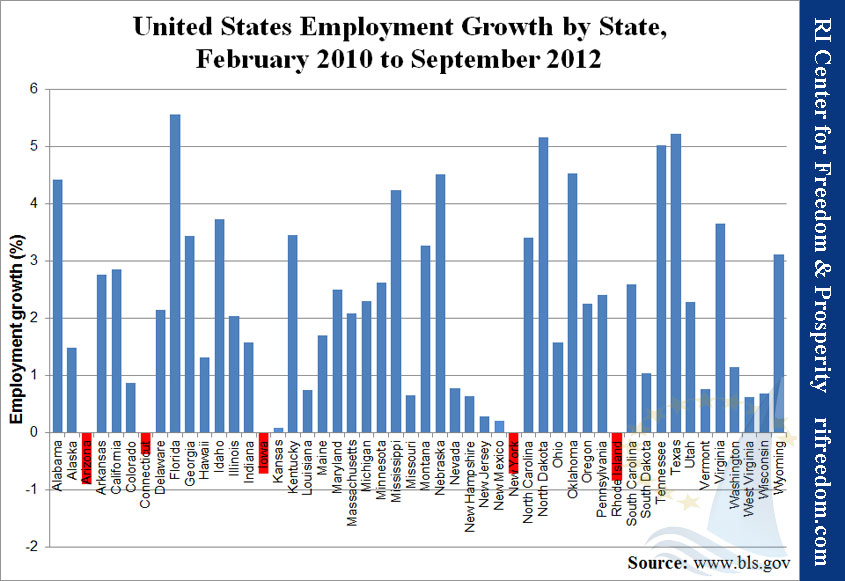An Unexplected Surge in Employment
The national political scene saw quite a stir, the first week of October, when the Bureau of Labor Statistics (BLS) reported a huge jump in employment and corresponding drop in the unemployment rate. As I noted at the time, a large percentage of the increase was attributable to people who are involuntarily working part time, rather than full time.
More curious, though, is that August-to-September is not typically a time for large increases. The September-to-October month is the one that brings a boost in hiring. That fact is usually obscured by the seasonal adjustment by which the BLS smooths the month-to-month results in order to highlight actual trends, but the not-seasonally-adjusted chart at the above link tells the tale.
This factor appears to be in play in the state data, too, especially in Rhode Island. In nine of the last twelve years, employment has dropped in September, before seasonal adjustment. And September has never increased by the 5,229 people reported in this year’s results.
When the state data first hit the Internet, Thursday, the RI Department of Labor and Training (DLT) pointed out that the state had never seen such an increase in employment since 1976 when statisticians adopted the current methodology. That’s only true after seasonal adjustment, but if putting the disclaimer aside, another astonishing “most” appears: in September, Rhode Island saw the largest seasonally adjusted increase in employment of any state in the United States of America.
The obvious question, therefore, is: Is anybody in Rhode Island actually feeling the boom? During a month that usually loses employment, if the Ocean State actually experienced a 1% increase, it would seem likely that some hints would have preceded the numbers.
Be that as it may, Rhode Island’s long-term trends illustrate what a massive, extended economic boom would be necessary for the state to get back even to the vibrancy of 2006.
This next figure shows the current labor force (which is employed plus unemployed residents) and employment as a percentage of the January 2007 labor force for Rhode Island, Massachusetts, and Connecticut. Even with Connecticut’s taking an apparent nosedive, it will be a while before Rhode Island’s results are not conspicuously worse than those of the two states from which it is nearly indistinguishable on a national map.
Moving beyond the Ocean State’s immediate neighborhood, even the biggest one-month jump in employment hasn’t made Rhode Island much less of an outlier when it comes to the states’ distance from their pre-recession peaks.

And Rhode Island is still one of only five states that the “recovery” has not brought above its employment level in February 2010, although Arizona has taken a slight edge in the competition for the worst non-recovery.







